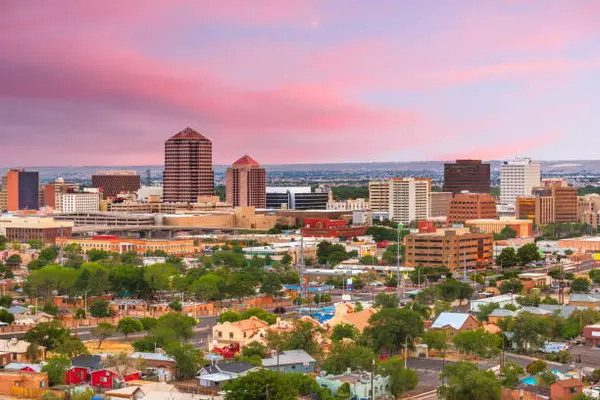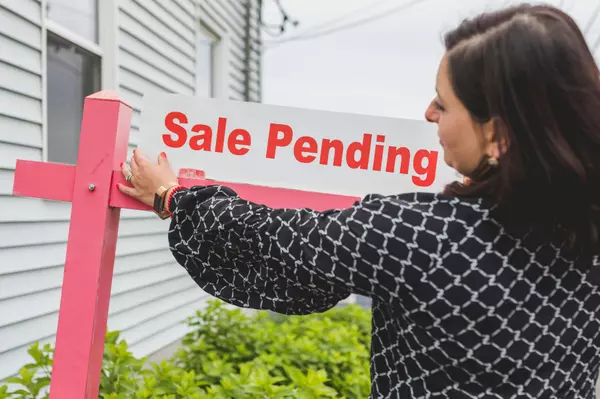How Albuquerque’s Dry Climate Affects Indoor Health — And What You Can Do About It

Living in Albuquerque comes with 300+ days of sunshine, beautiful high-desert landscapes, and crisp, dry air. But while the low humidity is great for outdoor adventures, it can take a toll on your indoor environment — and your health.
Whether you're a homeowner preparing to sell or simply trying to create a healthier living space, understanding how our climate impacts indoor air quality can help you stay ahead of potential issues.
In this guide, we’ll break down how Albuquerque’s dry climate affects your home, common health impacts, and simple steps you can take to improve comfort and air quality.
Why Albuquerque’s Climate Is So Dry
Albuquerque sits at a high elevation with a desert climate, meaning low year-round humidity. While this makes for clear skies and comfortable summers, it also creates conditions that can dry out the air inside your home — especially during winter when heaters run nonstop.
Low humidity levels indoors can affect everything from your skin and health to your furniture and home systems.
How Dry Air Affects Indoor Health
1. Dry Skin, Eyes & Throat
Low humidity causes moisture to evaporate from the body, leading to irritation, cracked lips, dry eyes, and persistent throat discomfort.
2. Increased Allergens
Dry air can cause dust, pet dander, and allergens to stay airborne longer, irritating the respiratory system.
3. Respiratory Issues
People with asthma or seasonal allergies often feel symptoms worsen because dry air makes airways more sensitive.
4. Higher Risk of Illness
Viruses tend to spread more easily in dry environments, making low humidity a factor in higher winter illness rates.
How Dry Air Affects Your Home
1. Cracking Wood & Furniture
Hardwood floors, cabinets, trim, and furniture can crack or warp without proper moisture levels.
2. Static Electricity
Dry indoor air = more shocks. This also affects electronics.
3. Dry, Dusty Airflow
Your HVAC system may circulate dry particles more easily, lowering indoor air quality.
4. Gaps Around Windows & Doors
Materials shrink slightly in dry air, which can lead to small drafts.
6 Ways to Improve Indoor Air Quality in Albuquerque’s Dry Climate
1. Use a Humidifier Strategically
Aim for indoor humidity levels between 30–50%.
Central humidifiers are ideal, but even a portable version can bring relief.
2. Add Indoor Plants
Plants naturally add moisture to the air and help purify indoor spaces.
Great low-maintenance options:
-
Snake plant
-
ZZ plant
-
Spider plant
-
Peace lily
3. Stay on Top of HVAC Filter Changes
Dry air carries more dust — which means filters clog faster.
Replace every 30–60 days for best results.
4. Ventilate When Cooking or Showering
Turn on exhaust fans and consider cracking a window to regulate moisture levels.
5. Use Natural Cleaning Products
Harsh chemicals can irritate your respiratory system, especially in dry air.
6. Seal Air Leaks
Check windows, doors, and ductwork to prevent drafts and ensure your HVAC system isn’t working overtime.
Healthy Air = A Healthier Home (And Better for Buyers, Too!)
If you're thinking of selling, improving indoor air quality can make a noticeable difference. Homes that feel comfortable and well-maintained tend to attract more buyers and may sell faster. Albuquerque buyers appreciate move-in-ready homes — even small upgrades like new air filters, sealed windows, or a clean HVAC system leave a great impression.
If you ever need guidance on preparing your home for the market or creating a healthier living environment, I’m here to help.
FAQ: Albuquerque’s Dry Climate & Indoor Health
1. What is a healthy humidity level for Albuquerque homes?
Aim for 30–50% indoor humidity to balance comfort, health, and home maintenance.
2. Do humidifiers really make a difference in dry climates?
Yes! Even small humidifiers can help relieve dry skin, reduce dust, and improve air comfort.
3. Can dry air damage my home?
It can. Wood floors, doors, and furniture may crack or warp over time without proper humidity control.
4. Are plants enough to add moisture to my home?
Plants help, but they usually need to be paired with a humidifier for noticeable improvements.
5. How often should I replace air filters in Albuquerque?
Because of dust and dryness, replacing filters every 30–60 days is ideal.
6. Can improving indoor air quality help my home sell?
Absolutely. A comfortable, clean-feeling home with good air quality is more attractive to buyers and shows better during showings.
Categories
Recent Posts










GET MORE INFORMATION

